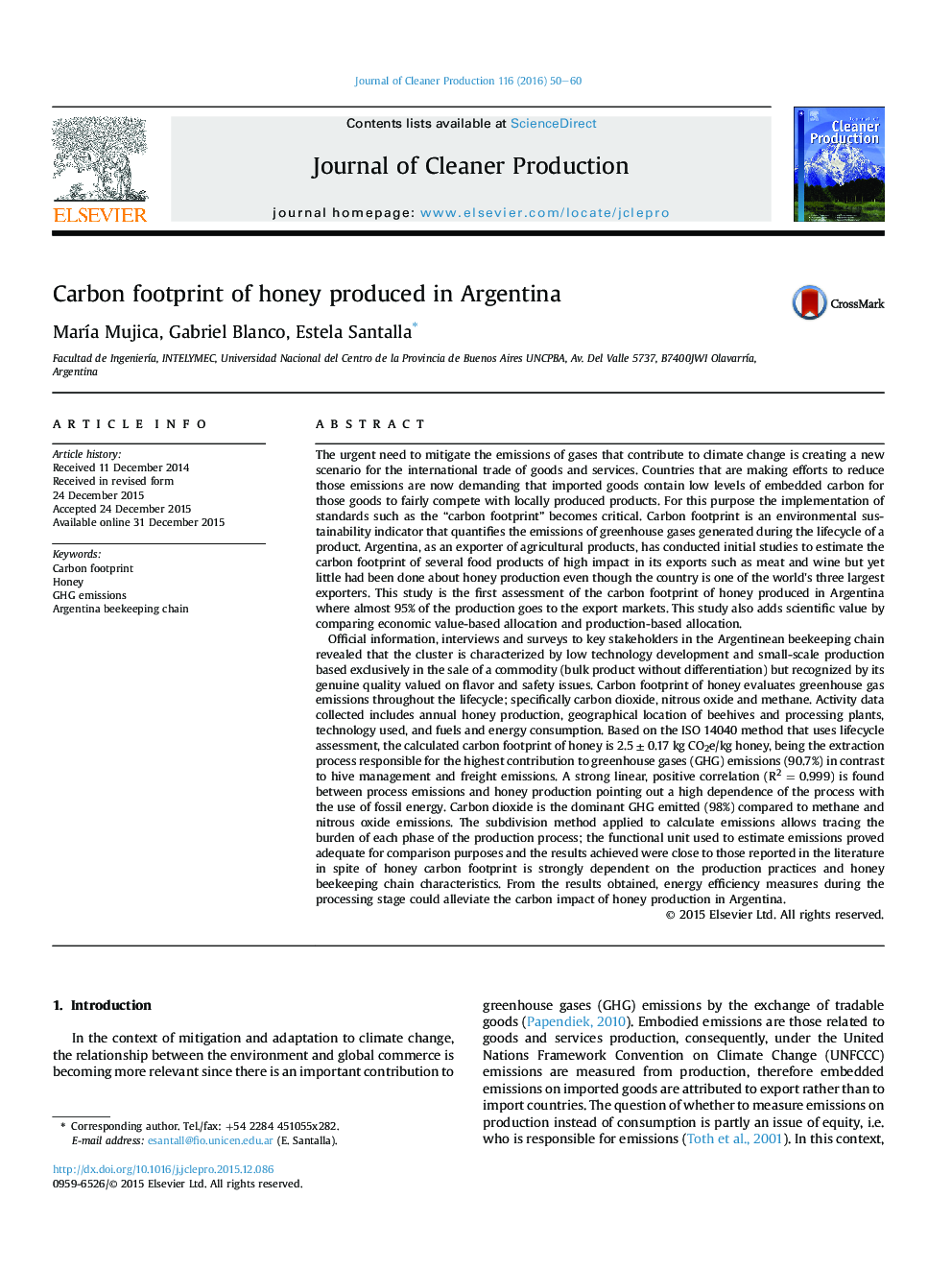| کد مقاله | کد نشریه | سال انتشار | مقاله انگلیسی | نسخه تمام متن |
|---|---|---|---|---|
| 1744183 | 1522133 | 2016 | 11 صفحه PDF | دانلود رایگان |
• Carbon footprint of honey production in Argentina is calculated based on ISO 14040.
• Among GHG calculated, CO2 emissions are higher than nitrous and methane.
• CO2 emissions during extraction process are the highest contribution to honey production carbon footprint.
• There is a strong linear positive correlation between CO2 emissions and honey production.
• The subdivision method applied allows to trace emissions down at each phase of honey production.
The urgent need to mitigate the emissions of gases that contribute to climate change is creating a new scenario for the international trade of goods and services. Countries that are making efforts to reduce those emissions are now demanding that imported goods contain low levels of embedded carbon for those goods to fairly compete with locally produced products. For this purpose the implementation of standards such as the “carbon footprint” becomes critical. Carbon footprint is an environmental sustainability indicator that quantifies the emissions of greenhouse gases generated during the lifecycle of a product. Argentina, as an exporter of agricultural products, has conducted initial studies to estimate the carbon footprint of several food products of high impact in its exports such as meat and wine but yet little had been done about honey production even though the country is one of the world's three largest exporters. This study is the first assessment of the carbon footprint of honey produced in Argentina where almost 95% of the production goes to the export markets. This study also adds scientific value by comparing economic value-based allocation and production-based allocation.Official information, interviews and surveys to key stakeholders in the Argentinean beekeeping chain revealed that the cluster is characterized by low technology development and small-scale production based exclusively in the sale of a commodity (bulk product without differentiation) but recognized by its genuine quality valued on flavor and safety issues. Carbon footprint of honey evaluates greenhouse gas emissions throughout the lifecycle; specifically carbon dioxide, nitrous oxide and methane. Activity data collected includes annual honey production, geographical location of beehives and processing plants, technology used, and fuels and energy consumption. Based on the ISO 14040 method that uses lifecycle assessment, the calculated carbon footprint of honey is 2.5 ± 0.17 kg CO2e/kg honey, being the extraction process responsible for the highest contribution to greenhouse gases (GHG) emissions (90.7%) in contrast to hive management and freight emissions. A strong linear, positive correlation (R2 = 0.999) is found between process emissions and honey production pointing out a high dependence of the process with the use of fossil energy. Carbon dioxide is the dominant GHG emitted (98%) compared to methane and nitrous oxide emissions. The subdivision method applied to calculate emissions allows tracing the burden of each phase of the production process; the functional unit used to estimate emissions proved adequate for comparison purposes and the results achieved were close to those reported in the literature in spite of honey carbon footprint is strongly dependent on the production practices and honey beekeeping chain characteristics. From the results obtained, energy efficiency measures during the processing stage could alleviate the carbon impact of honey production in Argentina.
Journal: Journal of Cleaner Production - Volume 116, 10 March 2016, Pages 50–60
